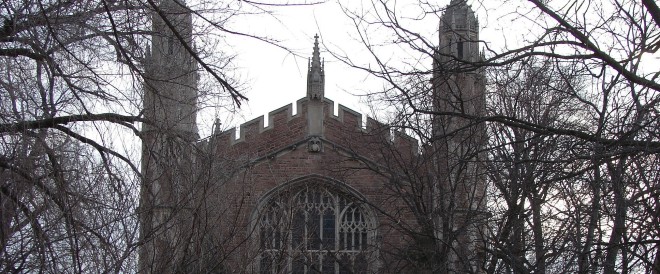RE: A Message from Chancellor Mark S. Wrighton
BY SONYA SCHOENBERGER AND GABE RUBIN
On August 7th, Washington University students awoke to an email with a subject line bound to get their hearts pumping: “A Message from Chancellor Mark S. Wrighton.” Wrighton’s message, published in The Record, came a week after an article in the New York Times singled out Washington University for its low percentage of Pell Grant recipients. The Times article quoted Chancellor Wrighton as saying socioeconomic diversity is not Washington University’s highest priority, borrowing from a 2012 Student Life article.
Wrighton’s response defended Washington University’s commitment to socioeconomic diversity, but presented confusing and contradictory data. Despite carefully contrived language, it revealed that Washington University falls behind its peers in both measures of diversity and constructive discussion about challenges ahead.
Wrighton mentions the “no-loan” program that allows students from families with incomes of under $75,000 to graduate without debt. Wrighton says that there are 120 students in this category today. These numbers are curious. With 7% of Wash U students receiving Pell Grants, assuming consistency across classes, this should leave about 112 students in a freshmen class of 1600 with family incomes below $50,000. We find it implausible that there were only eight freshmen students this past year with family incomes between $50,000 and $75,000. There is no information readily available online about the “no-loan” program. It is unclear from Chancellor Wrighton’s statement whether the program supports all students within the specified family income bracket, or only a select subset. The program sounds extremely promising, but its lack of transparency, and the inconsistent numbers provided in Wrighton’s statement, raise doubts.
Wrighton also mentioned the Leading Together Campaign’s goal of raising $330 million towards recruiting a “talented and diverse student body.” This total, though, will not all translate into need-based aid. In speaking about diversity, administrators often conflate the role of merit and need-based aid. While some merit scholarships do go towards those with significant need, many go to students from upper-class backgrounds. This latter type of aid, while useful in drawing students who might otherwise head to Ivy League institutions, does not increase socioeconomic diversity; on the contrary, it detracts from it by diverting potential funds from need-based aid.
Washington University has a “need-conscious” admissions policy, which means that admissions decisions discriminate against low-income applicants. Given the finite pool of need-based aid, the Office of Admissions must take care to admit only as many needy students as they have resources to support through graduation. The restrictions on socioeconomic diversity, therefore, lie not in admissions policies themselves but in the endowment allocations. Once a student is admitted, Student Financial Services bends over backwards to help him or her graduate (a policy to which Chancellor Wrighton seemed to allude when he mentioned the university’s 94% four-year graduation rate). Washington University is the only private school in the nation’s top twenty universities to consider an applicant’s ability to pay tuition as part of its decision-making process.
Chancellor Wrighton has repeatedly stated that Washington University’s ability to increase need-based aid is limited by its endowment. However, at over $5 billion (and about $380,000 per student), Washington University’s endowment is 17th (or 28th per student) in the nation, comparable to peer institutions such as Emory and Northwestern. Some university endowments are more flexible than others; Washington University’s need-based aid is tied to annual donations more closely than some of its peers. Given that Washington University is a research institution, it lacks the flexibility of small liberal arts schools to focus its resources entirely on undergraduate experience. But there are other universities similar to Washington University that have been able to balance educational accessibility with academic excellence at undergraduate, graduate, and postgraduate levels. Northwestern, like Washington University, has built its reputation as a premier international research institution in the postwar era. But Northwestern, with slightly fewer endowment dollars per student than Washington University, has managed to support need-blind admissions at the same time.
The core issue is not just endowment, but endowment allocation. The percentage of endowment money used for scholarships and financial aid is dwarfed by operating expenses, construction costs, and other expenditures required by a top research institution. Chancellor Wrighton’s August 6th message rang a bit hollow, but it does signal that the University leadership acknowledges that facing these issues—or shying from them—will impact Washington University’s reputation. For a school that cares deeply about managing its image, unflattering front-page New York Times profiles, despite promoting Washington University’s name as an “elite” school, are embarrassing.
Potential for real change lies not in defensive executive statements or superficially changing admissions policies, but in answering tough questions about the appropriate balance between campus amenities and educational accessibility. Here, students have a crucial voice. Washington University caters to the preferences of the upper middle class. Breaking down barriers to education accessibility might compromise the costly programs and amenities that attract an impressive and highly qualified student body. So long as the students who support Washington University, and those whom Washington University hopes to attract, place a premium on ritzy living spaces, Washington University will continue to package its undergraduate experience in a way that necessarily excludes a vast segment of smart, qualified American students. We hope students, and alumni, and donors will put pressure on the university to support a more diverse student body, in its admission polices and in the undergraduate experience at large. For an institution that pledges “to attract people of great ability from diverse backgrounds,” nothing less is acceptable.

1 Comment
Join the discussion and tell us your opinion.
Mark S. Wrighton….
You fuck ass….shut the fuck up about our Presidents issuing of orders against immigrants!!
Get your sorry little punk ass.. cunt face, out of our country!!1